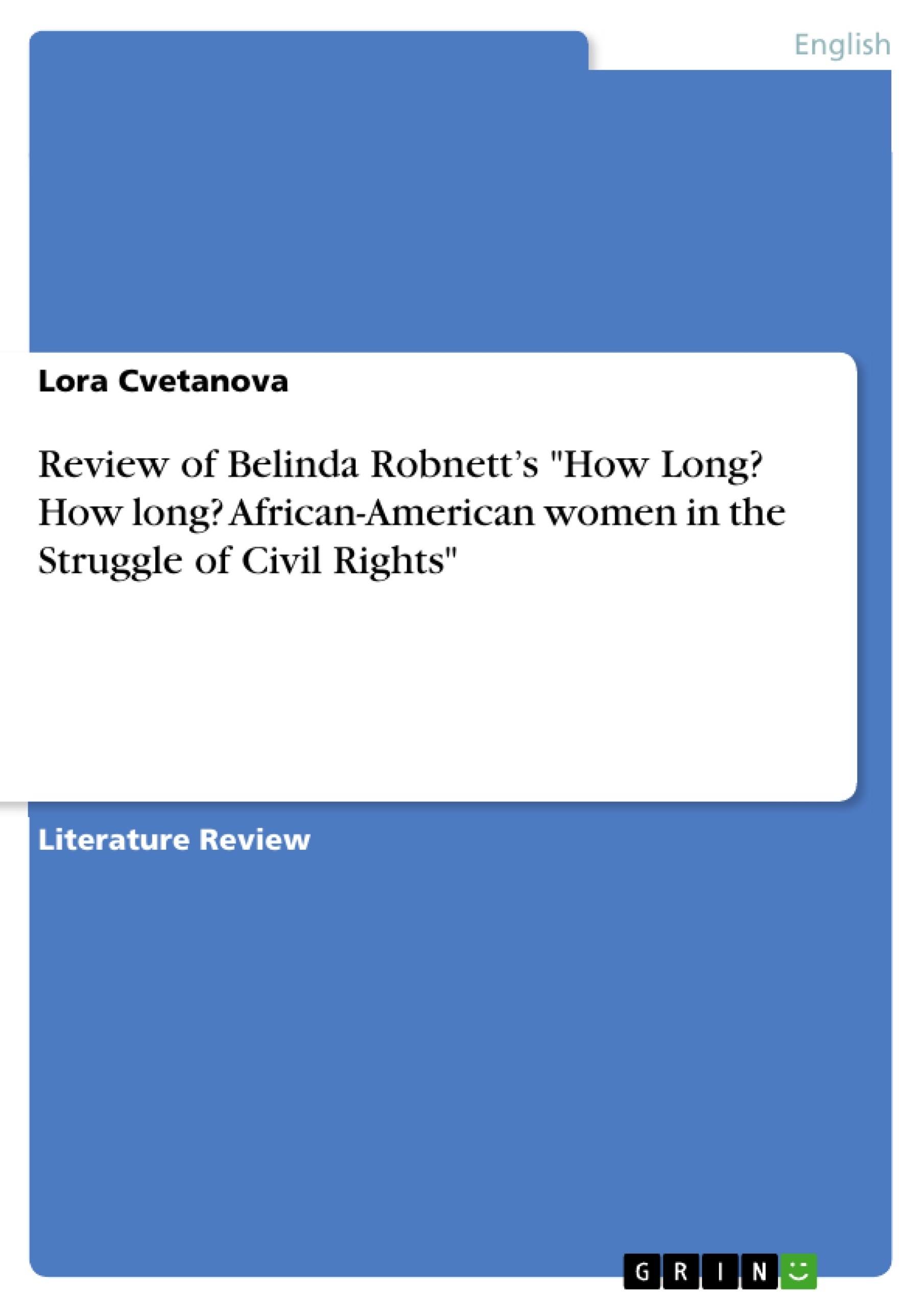For this study I will pay special attention to chapter two: Exclusion, Empowerment, and Partnership where thanks to many oral testimonies from the women themselves, Robnett explores further the relationships among movement participants and thus, offers a critique of black leadership. Here, she examines the role of women in sustaining the 1955 Montgomery Bus Boycott. She correctly attributes the overall success of the 381-day boycott to the infrastructure provided by middle-class women of the Women's Political Council (WPC). She reaches the conclusion that ‘what is abundantly clear is that African American women activists did not feel oppressed by their gender. Rather, they experienced feelings of empowerment and were inspired to transcend social constrains imposed by racists institutions and cultural forms (Robnett, chapter 2, page 51).’ One of her main arguments is that ‘women’s status was gained through acts of courage, gender divisions, while quite real, were irrelevant to their day to day struggle to survive as a people’(Robnett, ch2, page 40). Through many quotations of testimonies of women who were actually involved in the movement as leaders (ex. Faye Bellamy , Septema Clark , Dorothy Cotton ) Robnett affirms that ‘Women deferred to men was not at issue; the goal was the freedom of Black people and this could be achieved only through a cooperative effort’ (Robnett, ch 2, p.43).
The above quote implies that the importance, here is not gender, but freedom. It shows that black people are united and fight for their rights together without posing the question of gender difference. However not once in her work Belinda Robnett talks about the supportive position women had in relation to men in the Montgomery bus boycott. She remind us that ‘Though men became the formal leaders of the Montgomery Bus Boycott, it is clear that without the support of the women bridge leaders and the community, their efforts would have proved fruitless.’( Robnett, p. 65). Moreover, thanks to Johnnie Carr’s memories, Robnett insists on the fact that women ‘took responsibility for the well-being of those who were punished for boycott actions’ (p. 66) and ‘took responsibility for proving lunches’(p.66). Further in Mrs. Thelma Glass’s testimony one notices the repletion of the words ‘ service and support’, ‘give what type of services they could give to keep the movement going’, ‘people have to be fed’, ‘administrative support’.
Inhaltsverzeichnis (Table of Contents)
- Introduction
- Historical Background of the Civil Rights Movement
- Feminism and Black Feminism
- Review of 'How long? How long?'
- Belinda Robnett's sources and inspirations
- Conclusion
- Bibliography
Zielsetzung und Themenschwerpunkte (Objectives and Key Themes)
This paper aims to provide a comprehensive review of Belinda Robnett's book, "How Long? How Long? African-American women in the Struggle of Civil Rights," focusing on the role of African American women in the Civil Rights Movement. It examines the historical background of the movement, explores the intersections of race, class, gender, and culture within the context of women's activism, and analyzes Robnett's approach to writing this book.
- The role of African-American women in the Civil Rights Movement
- The intersection of race, class, gender, and culture in shaping women's activism
- The historical background and key events of the Civil Rights Movement
- The influence of feminism and black feminism on the movement
- Belinda Robnett's methodology and sources in her book
Zusammenfassung der Kapitel (Chapter Summaries)
- Introduction: Introduces the topic of African American women's participation in the Civil Rights Movement and outlines the paper's structure and objectives.
- Historical Background of the Civil Rights Movement: Provides a brief overview of the Civil Rights Movement, highlighting key events, including Brown vs. Board of Education, the Montgomery bus boycott, and the passage of the Civil Rights Act and the Voting Rights Act. It discusses the role of African American men and women in the movement, emphasizing the often-overlooked contributions of women.
Schlüsselwörter (Keywords)
This work focuses on the following key concepts: African American women, Civil Rights Movement, feminism, black feminism, racial equality, social justice, gender, class, culture, historical background, activism, methodology, sources, and Belinda Robnett's book, "How Long? How Long?"
- Citation du texte
- Lora Cvetanova (Auteur), 2014, Review of Belinda Robnett’s "How Long? How long? African-American women in the Struggle of Civil Rights", Munich, GRIN Verlag, https://www.grin.com/document/278719



